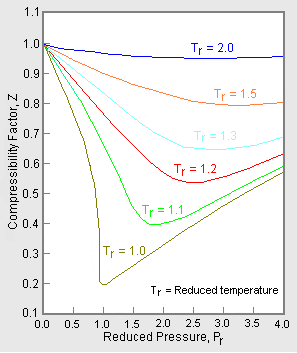.
I am trying to do hydraulics for a supercritical ethylene line. Undersupercritical conditions it will be exhibiting viscosity of a gas , with density similar to liquid and have no surfface tension. In other words it will be fluid with properties of gas an dliquid both.
Question is how to do do hydraulics calculations for it. Is there any special correlation for it. Conventional pressure drop correlations ddont really cover this type of fluid phase. Data i got is as below
Ethylene polymer grade 99.9 % pure
Plant battery limit conditions for 25 km line sizing connecting to another plant.
Properties provided by client at BL pressure 56.3 barg Temp 47.1 C (Tc=9.209C, Pc=49.3barg)

 FB
FB














